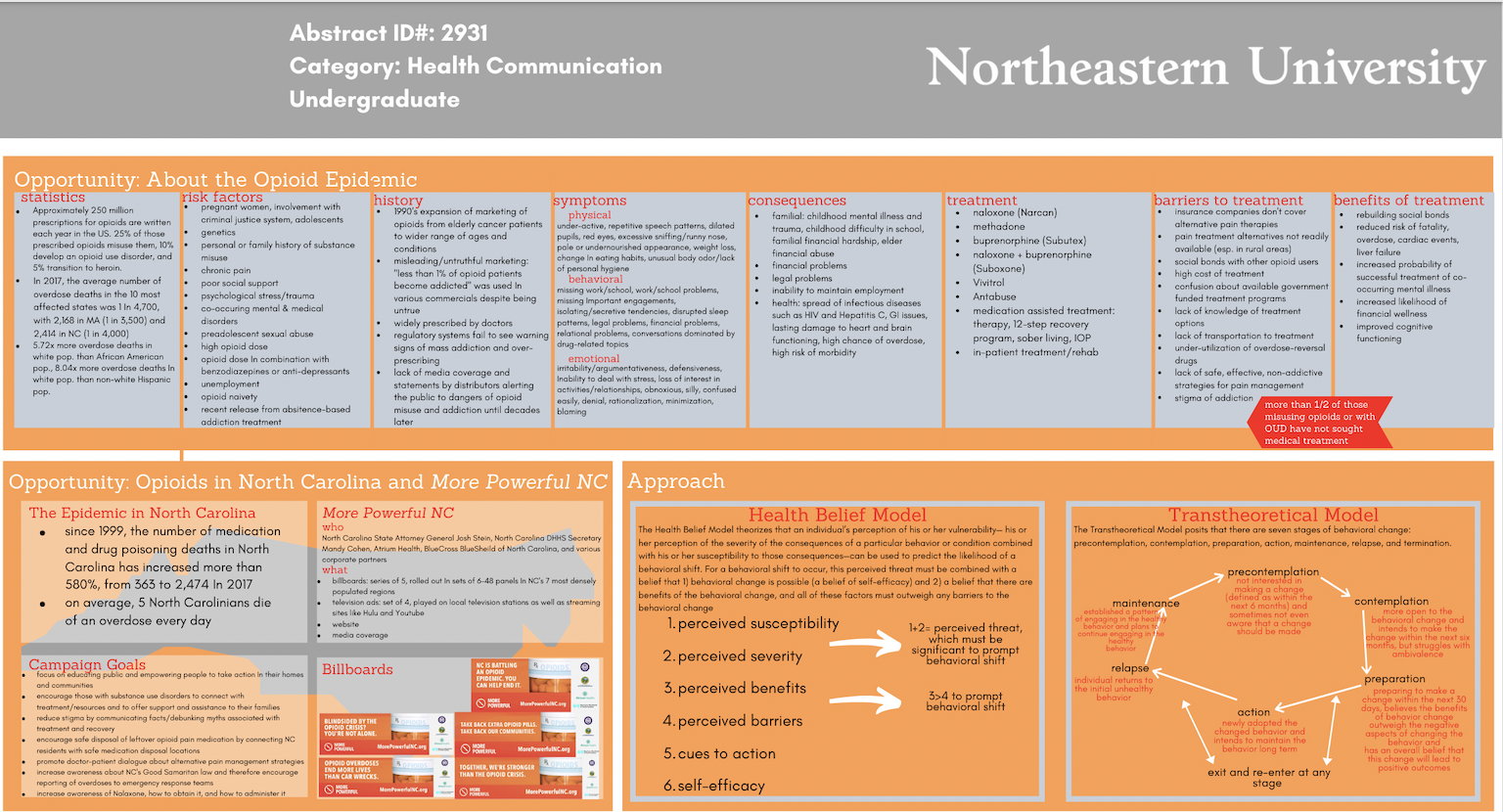Approximately 250 million prescriptions for opioids are written each year in the US. 25% of those prescribed opioids misuse them, 10% develop an opioid use disorder, and 5% transition to heroin. In 2017, there were over 47,000 opioid-related overdose deaths. Over 50% of those misusing opioids have not sought treatment due to lack of insurance coverage for and/or availability of alternative pain therapy and treatment, lack of social support, limited knowledge of addiction and treatment, lack of transportation, and cost. In North Carolina, overdose deaths have increased by over 580% between 1999 and 2017, averaging five overdose deaths every day.
The purpose of this project was to analyze More Powerful NC, a state-wide opioid awareness campaign sponsored by North Carolina State Attorney General Josh Stein, and the North Carolina Department of Health and Human Services. The Health Belief Model and the Transtheoretical Model served as theoretical frameworks for this analysis. This analysis showed that the campaign struggled to communicate the aspects of the Health Belief Model necessary to prompt behavior change, particularly perceived barriers. This analysis also showed that the campaign neglected communication regarding relapse, a pillar of the Transtheoretical Model, and something experienced by roughly half of those in recovery.
Finally, this analysis showed, through both theoretical lenses, that the campaign did not adequately tailor messaging to promote the suggested behavior shifts within rural communities, where barriers to change are more significant and where almost half of North Carolinians reside. This research informed the creation of a six-step checklist to be used by public health departments when drafting opioid messaging in hopes to reduce ineffective campaigns, prevent increasing budgets to pay communication firms, and to produce opioid messaging efficiently.
By

Sarah Rathje
Department
Communication Studies




